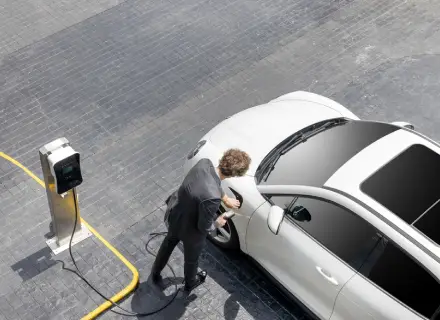Although investors were relieved by the better-than-expected sales of electric vehicles (EVs) in the second quarter of 2024 in the United States, automobile players still have a difficult road ahead of them following a steep decline in demand spurred on by high interest rates.
July 2 saw positive EV deliveries from General Motors, Rivian and Toyota. Tesla announced a lower-than-expected decrease, which prompted investors to buy shares of several of the firms.
High borrowing rates, economic uncertainty, and consumer preference for gasoline-electric hybrids have all contributed to the slower-than-expected growth in demand for electric vehicles (EVs), which has forced Tesla and other EV companies to lower prices or provide more incentives to entice customers into showrooms.
The need to keep manufacturing and battery costs down will persist, according to analysts. China is leading the way in the spike in electric vehicle sales, which the International Energy Agency (IEA) predicts will reach 16.6 million globally in 2024 from 13.7 million in 2023.
Analysts do, however, issue a warning: July 2 sales data is not enough to predict that the increase in EV sales will resume.
Vice president of research firm AutoForecast Solutions Sam Fiorani stated, “We’re going to see this happen for a long time and we’re expecting this period of time to have bumps along the way for the next several years as the transition goes from early adopters to mainstream buyers.”
He went on, “There will be up quarters and down quarters, but overall, the growth won’t be as high as it has been over the last few years.”
In the 2024 second quarter, EV sales in the United States increased by 40%, according to General Motors (GM).
According to a statement from GM’s North American president, Marissa West, “We can win as more consumers embrace EVs and we can keep winning if they prefer to stick with the engine technologies they know.”
Even Toyota, which has benefited greatly from the desire for gasoline-powered hybrid cars, acknowledged the growing demand and announced that it would begin producing two new electric vehicles (EVs) for the US market at its Kentucky and Indiana plants in 2026.
A Kia representative stated that while the percentage rise may not be as dramatic as a year ago, overall EV sales are still increasing at a very good rate.
Damon Rose, vice president of sales for the Toyota brand, said, “We’re continuing to hear some great demand from the marketplace.”
Automakers like Tesla and BYD are giving zero-interest loans and no-down-payment options in that market, and China has offered incentives of up to 10,000 yuan (USD 1,375.29) per auto trade-in to drive demand.
Despite suffering a second straight quarterly decrease, Elon Musk’s Tesla, the leader in the electric vehicle market, exceeded delivery estimates because of these incentives and comparable efforts made by the company in the United States.
Tesla would require a massive second half to match last year’s volumes, which is probably impossible, according to Matt Britzman, a Tesla shareholder and equities analyst at Hargreaves Lansdown.
“But this isn’t the moment to claim triumph over a poor EV market,” Britzman said.
As EV sales, which account for more than 80% of Tesla’s quarterly income, have slowed down, the company has redirected its attention in recent months toward its artificial intelligence initiatives, such as the soon-to-be-unveiled Robotaxi product and the Optimus humanoid robot.
But warning flags or not, EV enthusiasts remain unwavering in their conviction.
During an interaction with Reuters, analyst Thomas Monteiro said, “Given how pessimistic the market was on the EV play—and notably on Tesla—in the last couple of quarters, these variables should contribute to a repricing of the EV story on Wall Street.”
“A variety of positive catalysts have come together at this precise moment. It is certain that the EV proposal appears more promising now than it did even a fortnight ago, particularly for the larger participants,” he continued.
Global Sales Soaring
Global EV sales might reach 17 million in 2024, which means that more than one in five cars sold globally will be electric. This data, which comes from the International Energy Agency’s Global EV Outlook 2024, makes sentimental reporting on the decline of EV sales look ridiculous.
The enormous demand for affordable, eco-friendly electric vehicles (EVs) over the next ten years will fundamentally transform the global auto industry; by 2035, the IEA predicts that half of all cars sold worldwide will be EVs, reducing the need for oil by 6–10 million barrels per day, an amount that is currently used for road transportation in the United States.
With cheap power dispensing and expensive oil expenditures, drivers can save significant money by driving electric. The price difference between internal combustion engines operating on fossil fuels and electric vehicles has shrunk so quickly that upfront sales prices are hardly different.
It is incredible news for the economy, as it will lower consumer costs, boost investment and employment, and improve air quality.
Anyone, anywhere, will soon have the option to convert their next vehicle to an affordable, clean electric vehicle (EV). Everyone, everywhere, wants to save money and breathe healthier air.
The IEA is widely regarded as the world’s foremost expert on energy trends; thus, its projections are based on data rather than hype. Every year, the organisation discovers and evaluates significant advancements in global electric mobility.
Though recent news stories have suggested that a fall in sales signals the end of the electric vehicle revolution, the real facts in the world’s three largest auto markets could not be further from those sentimental headlines.
In China, the largest auto market in the world, EV sales are expected to reach 10 million vehicles this year, accounting for about 45% of total car sales in that nation; in the US, the second largest auto market in the world, EV sales are expected to increase by 20% from 2023 to roughly 11% of all new car sales. In Europe, the third largest auto market in the world, EV sales may increase by 10%, accounting for 25% of total sales.

